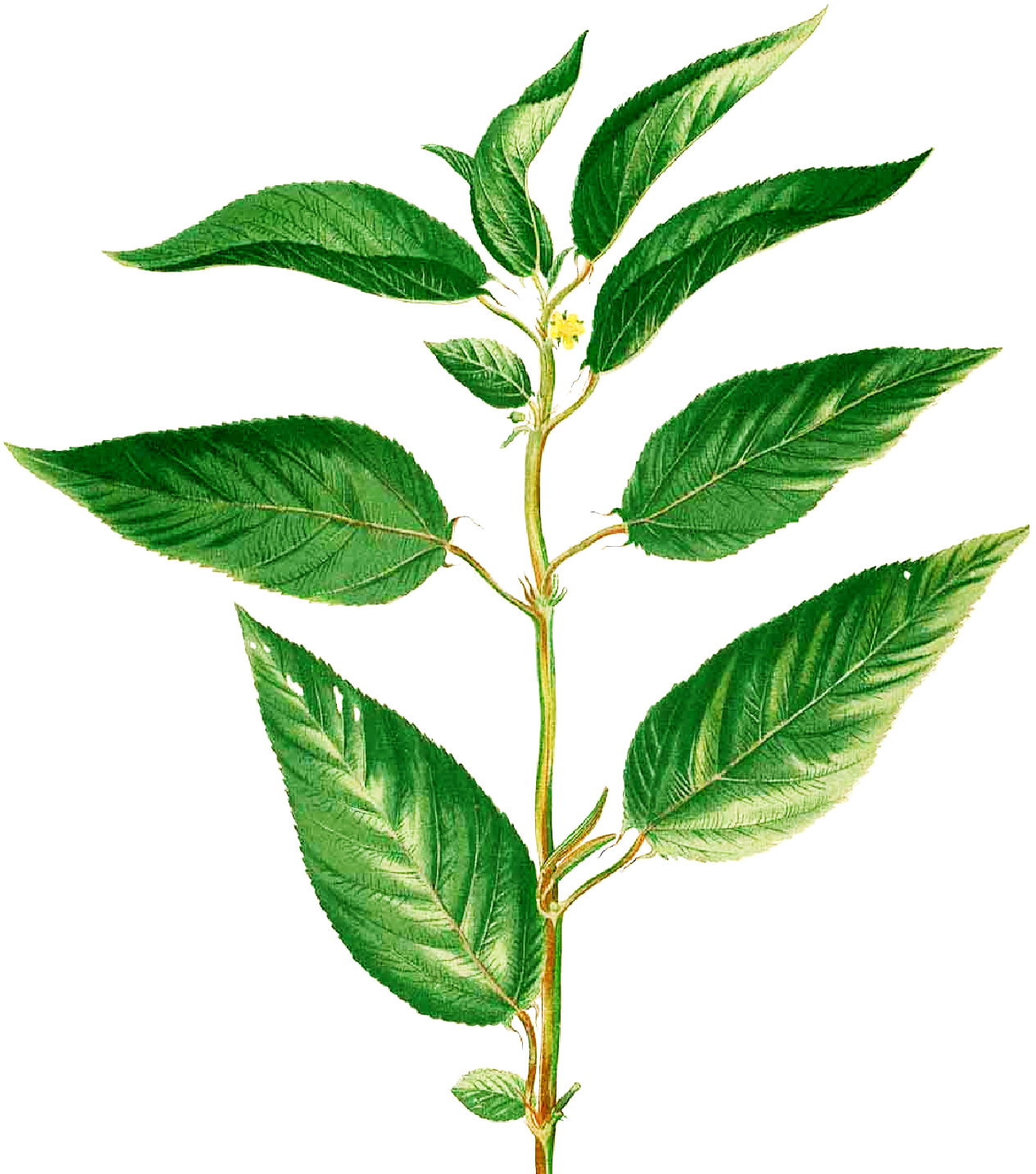- Get link
- X
- Other Apps
Paat/Nalte pata (Jute Leaves)
A very popular bitter taste Indian recipe.Botanical Name: Corchorus capsularis L. and C. olitorius L.
Family: Tiliaceae.

Cleopatra’s Secret Wrinkle Buster!! Jute has been grown for food since 6000 B.C. and was reportedly eaten by Cleopatra for its health and beauty benefits.(reference has been taken from www.antiaginghacks.com)
In India, it is locally known as:
Bengali: nalta sag or shaak, Nalita or Koshta.
Assamese: Titamara, Pata or Marapata.
Oriya: Jhot, Jhout, Jhuta or Toria.
Hindi: Chiench, Janascha, Narcha, Singhin, Pat, Titapat, or Jute.
Sanskrit: Cancu, Kalasaka, Nadibhanga, Nadika, Patta or Singgika.
Telugu: Janapanara.
Gujarati: Bor Chhunchi.
Kannada: Sanabu, Chinchala Gida, Chunchala Gida or Kinikini Beeja.
Marathi: Kurru Chantz, Chaunchan, Choche, Kulichi Bhaaji, Taankal Joot, Banpat or Tupkati.
Tamil: Piratti-Kirai or Naruvalli.
Telugu: Parinta or Janumu.
This Prakrit versified sloka found in "Prakrit Paingalam" described 'bengalees' one of the favorite traditional (shanaton) feast.
The meaning of this verse in Bengali is
"কলাপাতে ওগরা ভাত (ফ্যানা ভাত), তাতে গাওয়া ঘি, দুধ,
মৌরলা মাছ ও নালিতা শাক - কান্তা দিচ্ছে পুণ্যবান খাচ্ছে"
মৌরলা মাছ ও নালিতা শাক - কান্তা দিচ্ছে পুণ্যবান খাচ্ছে"
Paat pata (পাট পাতা) is a favorite dish during the months of summer, especially in Sambalpur and the western part of Odisha. Usually it is lightly sautéed and eaten along rice. A traditional meal invariably begins with a khar (a group of bitter dishes) in Assam, Xôkôta is one of them, preparation made with dry jute leaf.
This is a simplest Bengal village type recipe for a regular Bengali meal. Many other variations may be there, I made it as pure regional Bengal household likes it, not like a bora or pakora.
Ingredients for Paat pata bhaja recipe
- Jute leaf (পাট পাতা) whole about 2 to 3 per head,(preferably dried leaves)
- 1 tsp kala jeera/nigella seeds
- 2 tbsp rice powder
- 1 tbsp flour
- 1 tsp salt
- A pinch of sugar to balance the taste
- 1 tbsp oil
Method:
- For this recipe dried leaves are best. It can be made with fresh leaves also. Wash the leaves gently without damaging them and drain thoroughly.
- Mix the binder with minimum water. Sprinkle kala jeera (nigella seeds) in the mix. The water of wet leaves will be sufficient to stick the binders to the leaves.
- Do not chop the leaves, put the whole leaf in to the binder mix, and take care that the leaves do not get crushed or too much damaged otherwise it will become slimy.
- In the meanwhile put a flat tawa or nonstick fry pan on heat for shallow fry.
- Wet your fingers with water. Take leaf one by one. Do not be tempted to add more binder. It will just be enough to stick to the leaves and will keep the flavor of jute leaf. The leaf will just be quite visible. Now fold the whole leaf once and press them so that they stay flat.
- Now shallow fry with 1 tbsp oil in the batches.
- Do not turn the leaf until its done on one side. It can be moved easily with a spoon then.
- Turn the leaves and let it be for a few minutes. The leaves and the binder will become crunchy slight black and green in color.
- Serve with white steamed rice and raw green chili (optional). Perfectly cooked leaves can be crushed over rice.
Published Indian Cuisine Join me on Google+
url: foodcooking-inspiration
- Get link
- X
- Other Apps


Comments
Post a Comment